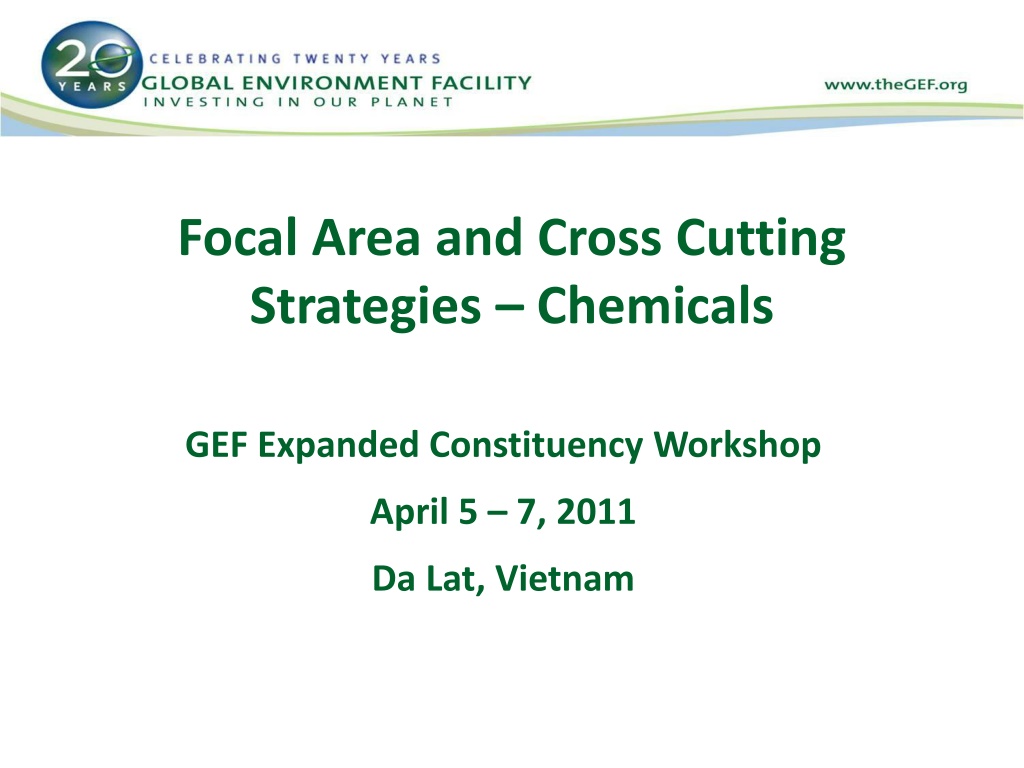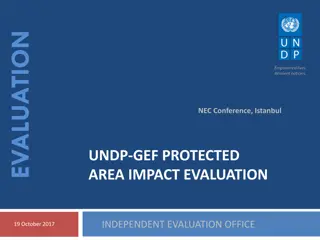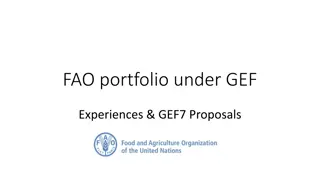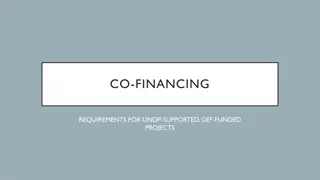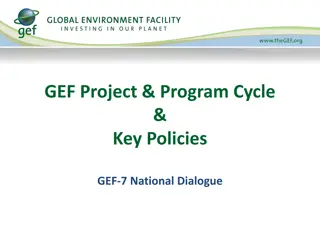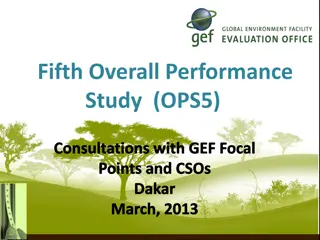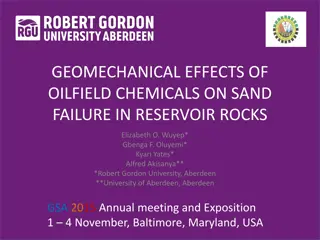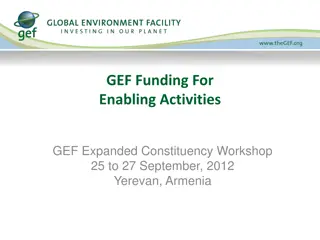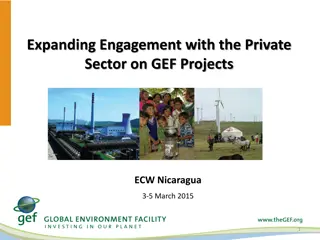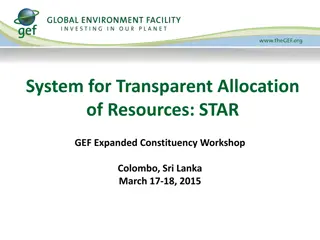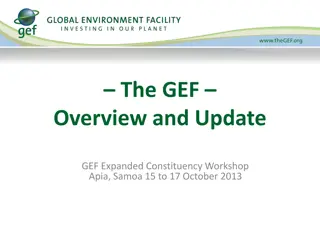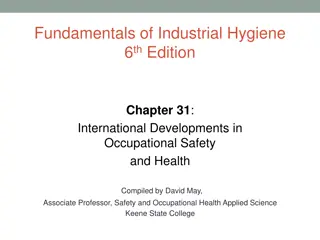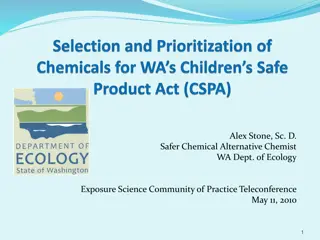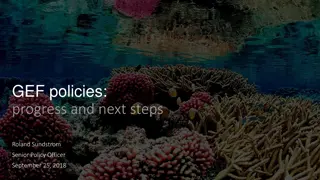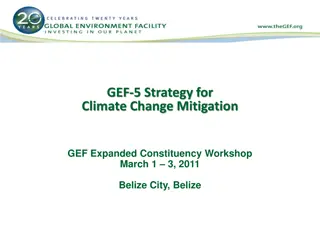GEF Chemicals Management Overview & Strategies
GEF plays a crucial role in managing chemicals such as Persistent Organic Pollutants (POPs), Ozone Depletion Substances, and Mercury. With a total allocation of $425 million, GEF agencies work towards reducing POPs use, updating National Implementation Plans, and supporting countries in meeting obligations under international agreements like the Stockholm Convention and Montreal Protocol. The focus is on enhancing coherence, capacity building, and waste disposal in a comprehensive manner.
Download Presentation

Please find below an Image/Link to download the presentation.
The content on the website is provided AS IS for your information and personal use only. It may not be sold, licensed, or shared on other websites without obtaining consent from the author.If you encounter any issues during the download, it is possible that the publisher has removed the file from their server.
You are allowed to download the files provided on this website for personal or commercial use, subject to the condition that they are used lawfully. All files are the property of their respective owners.
The content on the website is provided AS IS for your information and personal use only. It may not be sold, licensed, or shared on other websites without obtaining consent from the author.
E N D
Presentation Transcript
Focal Area and Cross Cutting Strategies Chemicals GEF Expanded Constituency Workshop April 5 7, 2011 Da Lat, Vietnam
Chemicals Management Brings together POPs, Ozone Depletion Substances, Mercury and Sound Chemical Management for increased coherence $425 million allocated to chemicals. The distribution of resources is as follows: POPs: $375 million Ozone: $25 million Sound chemicals management and mercury reduction: $25 million 3
Background to GEF Chemicals Management GEF is the financial mechanism for the Stockholm Convention (SC) on Persistent Organic Pollutants (POPs). GEF is the largest public funder for Chemicals management 5 GEF agencies are active in POPs projects UNDP, UNEP, UNIDO, World Bank and FAO. GEF supports implementation of the Montreal Protocol (MP) in Countries with Economies in Transition (CEITs). GEF widely credited with sharing the success of the MP so far with amounts phased out in Russia and CEITs roughly equivalent to amounts phased out in all developing countries. 4
POPs Outlook for GEF-5 Increased attention to potential for synergies with other focal areas, in particular with climate mitigation and releases of un-intentionally produced POPs (dioxins). Proposal to address chemicals in a more comprehensive manner, whilst keeping focus on mandate as financial mechanism to the Stockholm Convention. 5
POPs Outlook for GEF-5 Core objectives Reduce POPs use / production / releases; including that of new POPs ; Outcomes: Capacity build for implementation and National Implementation Plans updated; Reduction of production and use of POPs; Reduction of releases with emphasis on linkages with climate mitigation; POPs waste disposed of. 6
ODS Outlook for GEF-5 The GEF-5 strategy for chemicals includes provisions for further investments in economies in tradition to support countries meet their reporting obligations under the Montreal Protocol, including implementation of HCFCs phase out plans.
Additional GEF-5 Programs Demonstration of mercury reduction activities through; Reducing mercury use and exposure in Artisanal and Small- scale Goal Mining (ASGM) Enhancing capacity for safe storage Reducing atmospheric emissions of mercury Improving data and scientific information at national level Managing wastes and contaminated sites 8
Additional GEF-5 Programs contd Pilot implementation of SAICM priorities to generate global environmental benefits; Pilot implementation of SAICM priorities to generate global environmental benefits. Possible project areas include: Lead in paint; E-wastes and Chemicals in products 9
Sound Chemicals Management Activities are intended to support synergistic interventions that generate multi-focal area benefits through projects that significantly contribute and produce positive impacts towards the fulfillment of obligations in relevant conventions (including Stockholm Convention, Convention on Biological Diversity, Convention to Combat Desertification, and others). 10
